#An American Auction in Paris
Photo



The fashion nerd in me is utterly thrilled by Felicity’s summer dress. This style of lightweight white cotton dress was eventually referred to as a chemise à la reine, after Marie Antoinette was painted (and immediately hated for) wearing one.

This style only really became popular for adults in the 1780s, but in the 1770s, it was popular summer-time wear for girls.
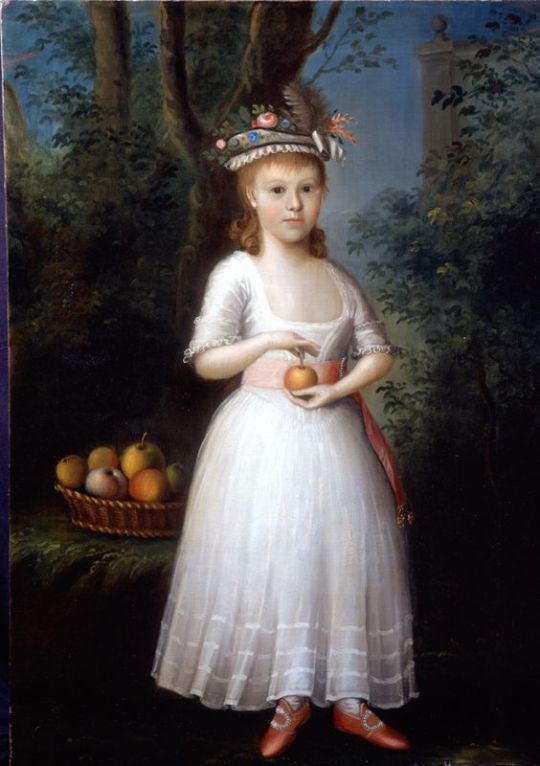
There’s not a whole lot to say about Elizabeth’s dress, it’s again pretty accurate and appropriate for her social status.
The straw hats are not simply straw hats. The proper name for that style is bergère, or shepherdess. They were pretty essential outdoor wear for proper ladies who wanted to protect their fine pale complexions.

(Kerry Taylor Auctions)

(The Victoria & Albert Museum)
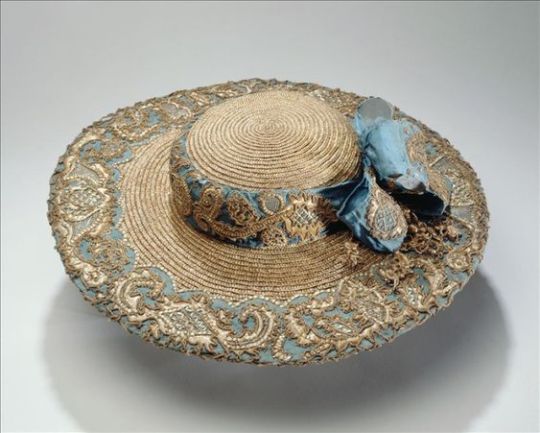
(Musée Galliera de la Mode de la Ville de Paris)
Finally, I kind of feel the need to address what’s the elephant in the room when it comes to Felicity:

Everyone was acting all horrified and outraged by this, but, well.... have I got news for you about middle-class white families in Virginia in 1774. It would be very inaccurate for them to not have slaves.
If we want to get technical, Felicity herself never actually owned slaves. Her father owned a couple of slaves, and her grandfather owned a plantation. When her grandfather died, the plantation would have gone to her father, and then down to her little brother, William. Felicity likely would have grown up to marry a man who owned slaves, but she still wouldn’t own them outright herself. All that being said, there were special no-male-heir circumstances in which women could inherit property, and there absolutely were woman slave-owners out there.
Slavery is a part of American history and honestly it does us more of a disservice if we try to cover it up. The fact that Felicity’s family owns slaves is a great chance to teach kids about the big, messy questions of history. Kids are smart and capable of understanding complex historical issues. They deserve to know this kind of shit.
549 notes
·
View notes
Note
Hey there, it's the anon who asked about Maria Reynolds! I realized in hindsight (read: two seconds after I sent the ask lmao) that I got her mixed up with Maria Cosway, and then I realized that I don't know crap about her either. Reading past posts you seem to mostly cover stuff about Hamilton and the people surrounding him, and also Maria Cosway isn't American lol, but I hope you don't mind me at least asking anyway? Sorry for rambling it's cool if you don't answer
hey welcome back! don't worry, you're not the first nor the last person to do that lol. and don't worry! europeans are welcome here, so maria cosway is fair game for asking about. however, apologies for asking questions aren't so i hate you (jk ily <3) now i won't be able to go into as much detail because im not drawing from much of my own personal knowledge, but my internet sources will be linked!

Source: The Judgment of Korah, Dathan and Abriam by Maria Louisa Catherine Cecilia Hadfield Cosway
Maria Louisa Catherine Cecilia Hadfield Cosway was the first child of two hotel owners in Florence, Italy. As a young girl in a convent, she showed proficient artistic talent in both drawing and music. She was educated by Johann Zoffany and introduced her to other European artists.
She began painting by copying other works when she began to get recognition, allowing her to travel Italy. After her father's passing, she moved to London in 1779 and became well connected. One such connection was with Angelica Kauffman Church (not the same as Angelica Schuyler Church, though she was friends with her two) who was also a female painter.
Maria was introduced to Richard Cosway in London, and they were married in January 1781 for primarily financial reasons. The couple were within the most fashionable circles of the time. In 1786, the Cosways went to Paris where they met Thomas Jefferson. Maria and Jefferson became friends who flirted an excessive amount, and I found a really interesting article on that here.
Unfortunately, her husband was a grade-A asshole who wouldn't sell her works and stunted her artistic growth. I'm an artist, and I can tell you, a few months off can really do a lot of damage to your muscle memory and suddenly everything you put on paper looks like absolute shit, so I feel for her.
Maria had her only daughter, Louisa Paolina Angelica, in May 1790 but her health suffered afterwards. She went to Italy to recoup and returned to London in 1794. In 1796, her daughter tragically died.
Maria coped by turning to religion, Catholicism to be specifically (been there too, she just like me fr). However, on the plus side, she got her prints published by Rudolph Ackermann and made etchings of paintings at the Louvre which had been stolen during the Napoleonic Wars. She actually knew the Bonapartes personally and their patronage allowed her to open a girls' school at Lyons in 1803, which is so badass. She would later open another school for girls in Lodi in 1812.
Her husband died in 1821, and she sold his work at auction. She used some of the profit from these sales to fund her school in Lodi which is so fucking metal. She was actually made a baroness by the Austrian Emperor and Empress after they visited her school. That's also fucking metal.
She lived the rest of her life in Lodi where she died in 1838 near her school. In conclusion, Maria Cosway was more badass than I realized, and I think she's absolutely lovely. RAHHH WOMEN!!!
I hope this has helped. Again, sorry I haven't been able to go as in-depth, but I don't know Maria like that. I'm gonna give you extra sources just because I love you so much. I hope you can find a jumping off point!! European painters are always interesting, especially if they're badass, metal women who kick names and take ass, so I encourage you to do more research!!!
Sources: Maria Cosway- Royal Academy of Arts
Royal Collection Trust- Maria Cosway Collection (this has her art!!)
American Heritage- Thomas Jefferson and Maria Cosway (this was quoted in the post!)
Yale Center for British Art- Maria Cosway Was a Part of England's First Celebrity Art Couple
#history#maria cosway#maria hadfield cosway#european history#italian history#art history#women's history#18th century#1700s#1800s#19th century#thomas jefferson#angelica schuyler#angelica schuyler church#asks
16 notes
·
View notes
Text

Picasso Masterpiece 'Femme à la montre' Sells for $139 Million at Auction
A Picasso masterpiece entitled “Femme à la montre” fetched more than $139 million on Wednesday, becoming the second most valuable work by the artist ever sold at auction.
The 1932 oil painting took center-stage at a two-day event at Sotheby’s in New York, at the sale of late philanthropist Emily Fisher Landau’s private collection.
The piece, which measures 51¼ x 38 inches (130 x 96.5 centimeters), depicts Picasso’s lover and “golden muse” Marie-Thérèse Walter, who featured in many of his portraits.
According to the auction house, the portrait is from one of the most prolific years of the Spanish artist’s career, which was the subject of an entire exhibition organized by the Musée Picasso in Paris and London’s Tate Modern in 2018.
In a statement announcing the sale in September, Julian Dawes, Sotheby’s head of Impressionist & Modern Art for the Americas, said: “Picasso’s ‘Femme à la Montre’ is a masterpiece by every measure. Painted in 1932 — Picasso’s ‘annus mirabilis’ — it is full of joyful, passionate abandon yet at the same time it is utterly considered and resolved. Its bold primary colors sing from the five-foot-tall-canvas.”
Picasso first met Walter in Paris in 1927 when she was 17 years old and he was still married to his first wife, Olga Khokhlova, a Russian-Ukrainian ballet dancer. Walter would become the inspiration for some of his most sought-after canvases, drawings and sculptures.
As time went on, Picasso found it increasingly difficult to hide his feelings for Walter from his work — something that became clear during his first large-scale retrospective and finally ended his marriage.
The artist painted “Femme à la montre” in August 1932, soon after the retrospective at the Galerie Georges Petit in Paris ended.
According to Sotheby’s, “the sense of release from keeping secrets about his affair seem to have spilled out onto this extraordinary canvas, in which he gives full painterly rein to new-found freedoms, drenching the painting in strong primary colors and beautiful forms, while at the same time paying careful attention to every small detail, creating a composition that is both intensely complex and deeply harmonious.”
Picasso died in 1973, and Walter in 1977.
The painting is one of about 120 from the collection of Fisher Landau, a world renowned contemporary art collector who died earlier this year aged 102, according to The Art Newspaper.
The two-part sale, which concludes Thursday, also includes works by Mark Rothko, Andy Warhol, Willem de Kooning and Georgia O’Keeffe. The collection is expected to sell for over $400 million overall. Other big-ticket items auctioned on Wednesday included one of Jasper Johns’ iconic American flag paintings, which went for $41 million, and an Ed Ruscha artwork — an oil painting emblazoned with the word “Boss” — that fetched more than $39.4 million.
Fisher Landau began seriously collecting after receiving an insurance payout following an armed robbery of her jewelry at her New York home in 1969.
In an interview for an exhibition catalog, quoted in the Sotheby’s statement, she said of the episode: “Even though Lloyds of London paid up, there was no way to replace that collection. It was so beautiful. And they got it in one fell swoop…. I was devastated. But I decided that I didn’t want the jewelry any more. I now had seed money for a collection.”
Last year, Picasso’s most curious painting of Walter, in which she appears as a tentacled sea creature, sold for $67.5 million at Sotheby’s in New York.
Picasso’s portraits of Walter have become highly sought-after, with his other 1932 works “Femme assise près d’une fenêtre (Marie-Thérèse),” selling for $103.41 million in 2021, and “Nude, Green Leaves and Bust,” selling for $106.5 million in 2010.
In May 2015, Picasso’s “Les femmes d’Alger (Version “O”) sold at Christie’s in New York for $179.4 million — at that time, the highest price ever paid for a work of art at auction.
By Lianne Kolirin.


Pablo Picasso
Femme à la montre
Signed Picasso (upper left); inscribed Boisgeloup and dated 17 Août XXXII. (on the stretcher).
oil on canvas.
Executed on 17 August 1932.
51 ⅛ by 38 ⅛ in. 130 by 97 cm.
#Pablo Picasso#Picasso Masterpiece 'Femme à la montre' Sells for $139 Million at Auction#Pablo Picasso Femme à la montre 1932#spanish artist#painter#painting#oil on canvas#art#artist#art work#art world#art news
21 notes
·
View notes
Text
THIS DAY IN GAY HISTORY
based on: The White Crane Institute's 'Gay Wisdom', Gay Birthdays, Gay For Today, Famous GLBT, glbt-Gay Encylopedia, Today in Gay History, Wikipedia, and more … January 5

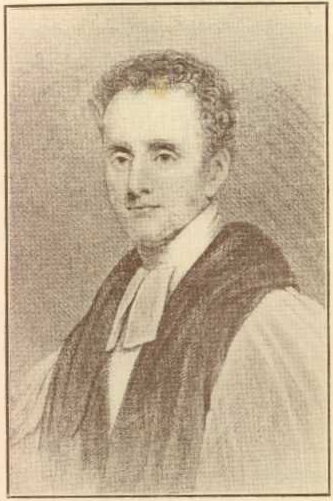
1773 – Richard Heber (d.1833) was an English book-collector.
A taste for book collecting was developed in him in childhood. As an undergraduate, he began to collect a purely classical library, but his taste broadening, he became interested in early English drama and literature, and began his wonderful collection of rare books in these departments. Succeeding on the death of his father in 1804 to large estates in Yorkshire and Shropshire, which he considerably augmented, he forthwith devoted himself to the purchase of rare books. Heber was one of the 18 founders in 1812 of the Roxburghe Club of bibliophiles.
He possessed extensive landed property in Shropshire and Yorkshire, and was High Sheriff of the former county in 1821, was Member of Parliament (MP) for Oxford University from 1821 to 1826, and in 1822 was made a D.C.L. of that University. He was one of the founders of the Athenaeum Club, London.After ransacking England for books, Heber travelled extensively on the Continent, purchasing everywhere, and leaving large depots of books in Paris, Antwerp, Brussels, Ghent, and elsewhere in the Netherlands and Germany. At booksales he sometimes purchased single volumes, sometimes whole libraries. Sir Walter Scott classed Heber's library as "superior to all others in the world." He did not confine himself to the purchase of a single copy of a work which took his fancy. "No gentleman," he remarked, "can be without three copies of a book, one for show, one for use, and one for borrowers." To such a size did his library grow that it overran eight houses, some in England, some on the Continent.
In 1826 he and Charles Henry Hartshorne, a friend he had made through the Roxburghe Club, encountered gossip and innuendo over the nature of their relationship. John Bull magazine hinted in two of its issues that it was homosexual. Heber abruptly left the country; Hartshorne sued John Bull successfully in the courts.
At his death his collection in England was estimated by at 105,000 volumes, exclusive of many thousands on the Continent, the whole having cost more than £180,000. This immense library was disposed of by auction after the owner's death, the sale lasting 216 days and realizing more than £60,000.
After he died the well-founded gossip that he had been homosexual resurfaced.


1907 – Rod Riffler, born Rudolf Ungar, (d.1941) was a Croatian modern dance teacher, choreographer and owner of a dance school in Zagreb, who was killed during the Holocaust.
Riffler was born in Osijek to a Jewish parents, Makso and Ilka (née Lang) Ungar. His father was a merchant born in Osijek. Riffler was raised with two siters, Marie Louise and Marija, and younger brother, Rafael. When he moved from Osijek to Zagreb, Riffler opened a dance school and was one of the best teachers of modern dance at the time.
Riffler was mentor and teacher of Lea Deutsch, the well-known Croatian Jewish child actress. He was also a close friend of Deutsch's mother, Ivka.
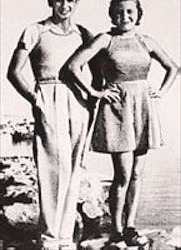
Riffler was homosexual. In 1941, when the Ustaše (Croatian Fascists) found out that he was a Jew and homosexual, Riffler was arrested and deported to Jasenovac concentration camp. Riffler died from hunger in the Jasenovac concentration camp. He was 34 years old.
In 2010 Croatian director Branko Ivanda made a film "Lea i Darija - Dječje carstvo" (Lea and Darija - Children's Empire), about the tragic destiny of Lea Deutsch, who died while being shipped to Auscwitz. Rod Riffler was portrayed in the movie by Croatian actor Radovan Ruždjak.


1931 – Alvin Ailey, Jr. (d.1989) was an American choreographer and activist who founded the Alvin Ailey American Dance Theater in New York. Ailey is credited with popularizing modern dance and revolutionizing African-American participation in 20th century concert dance. His company gained the nickname "Cultural Ambassador to the World" because of its extensive international touring. Ailey's choreographic masterpiece Revelations is believed to be the best-known and most often seen modern dance performance.
Ailey was born to his 17-year-old mother, Lula Elizabeth Ailey, in Rogers, Texas. His father abandoned the family when Alvin was only 6 months old. Like many African-Americans living in Texas during the Great Depression, Ailey and his mother moved very often and she had a hard time finding work. Ailey grew up during a time of racial segregation and rumors of violence and lynchings against African-Americans. When Ailey was five, his 22-year-old mother was raped by a group of white men, leaving him afraid of whites. Early experiences in the Southern Baptist church and jook joints instilled in him a fierce sense of black pride that would later figure prominently in Ailey's signature works.
In the fall of 1942, Ailey's mother, like many African Americans, migrated to Los Angeles, California where she had heard there was lucrative work supporting the war effort. Ailey joined his mother later by train, having stayed behind in Texas to finish out the school year. Ailey's first junior high school in California was located in a primarily white school district. As one of the only black students, Ailey felt out of place because of his fear of whites, so the Aileys moved to a predominantly black school district.
Ailey did not become serious about dance until in 1949 his school friend Carmen De Lavallade introduced him to the Hollywood studio of Lester Horton. Horton would prove to be Ailey's major influence, becoming a mentor and giving him both a technique and a foundation with which to grow artistically.
When Horton died in November 1953 the tragedy left the company without an artistic director. The company had outstanding contracts that required and desired new works. When no one else stepped forward, Ailey assumed the role of artistic director. Despite his youth and lack of experience (Ailey was only twenty-two and had choreographed only one dance in a workshop) he began choreographing, directing scene and costume designs, and running rehearsal. Not finding another mentor, he began creating works of his own.
Ailey formed his own group, Alvin Ailey American Dance Theater, in 1958. The group presented its inaugural concert on March 30, 1958. Notable early work included Blues Suite, a piece deriving from blues songs. Ailey's choreography was a dynamic and vibrant mix growing out of his previous training in ballet, modern dance, jazz, and African dance techniques. Ailey insisted upon a complete theatrical experience, including costumes, lighting, and make-up. A work of intense emotional appeal expressing the pain and anger of African Americans, Blues Suite was an instant success and defined Ailey's style.
For his signature work, Revelations, Ailey drew upon his "blood memories" of Texas, the blues, spirituals, and gospel. These forces resulted in the creation of his most popular and critically acclaimed work. Ailey originally intended the dance to be the second part of a larger, evening-length survey of African-American music which he began with Blues Suite.
Ailey was openly gay and is one of the most prominent gay Black men in American history. According to Black gay activist Keith Boykin, this is rarely acknowledged in the Black community due to the stigma surrounding homosexuality. For a time during the 1950s, Ailey was romantically linked with political activist David McReynolds. Ailey died in 1989 at the age of 58. To spare his mother the social stigma of his death from AIDS, he asked his doctor to announce that he had died of terminal blood dyscrasia


1942 – The Spanish novelist Terenci Moix had a fascination for the ordinary combined with beautifully wrought language, and a love of good living, honed by lonely hours struggling for literary perfection. His Onades sobre una roca deserta, (Waves On A Desolate Rock) won the 1968 Pla prize.
The following year, he published El dia que va morir Marilyn (The Day That Marilyn Died), which became the talisman-book of his generation. This famous novel follows two Barcelona families from before the Spanish civil war to the new freedoms of the 1960s.
Moix was born to a lower middle-class family in Barcelona's old city, and christened Ramon. In the bitter years after the civil war, he grew up in the Plaza del Peso de la Paja (straw-weighing square). El peso de la paja also means the "weight of wanking" – the sort of double entendre that Moix adored – and, in the 1990s, became the title of his three-volume autobiography.
He left school at 14, and fled from his parents' rows to live for several years in Paris, London and Rome. Abroad, he met 1960s pop culture, which reaffirmed the value of the world of films he had escaped into as a child. He became, too, a man of formidable knowledge and culture – a linguist, an opera-lover and an Egyptologist.
Moix chose early to live his life as freely as possible. He returned to Barcelona in the mid-1960s to become openly (and illegally) homosexual, irreverently exhibitionist, scandalous and obscenely witty. Some say he named himself Terenci after the young Terence Stamp.
In 1986, he won the Planeta prize with No digas que fue un sueño (Don't Say It Was A Dream), a reworking of the story of Antony and Cleopatra. This sold more than a million copies, and brought him mass popularity. It is a book of lyrical, rich language, peppered with mordant darts of irony and laughing vulgarity.
Four more novels on ancient Egypt followed, culminating in El arpista ciego (The Blind Harpist, 2002). He was wont to say, with a rich camp chuckle, that he had been left by seven lovers, so took refuge in frequent visits to Egypt – first in the 1960s – and a vast collection of videos. Egypt and films were the loves that never betrayed him.
Moix lived life on his own terms. Transgressing society's norms, he found that masses of people ended up loving him for his freedom and integrity. His best books are landmarks in modern Spanish literature.
He died in 2003 aged 61 from emphysema.


1943 – On this date the famed Dutch soccer referee Ignace Van Swieten was born (d. 2005), He was born in a Japanese POW camp near Semarang in Indonesia, a Dutch colony at the time.
Van Swieten was openly Gay at a time when it was not accepted in professional sports. Hell it's still tough. According to a 2009 poll conducted by the Dutch football magazine, Magazine Voetbal International, 33% of professional football players in the Dutch league expressed the notion that if a footballer came out of the closet, he wouldn't have a life anymore. Twenty-five percent believe that homosexuality will always be a taboo. Sixty percent feel that there is no place for homosexuals in Dutch football. Only eleven players said that they do not consider it a taboo anymore.
Van Swieten received a lot of hatred from players and fans alike, including an attack with a hammer, but is now considered a great figure in Dutch Football and a valued teacher to other players. He was also a teacher at the KNVB Academy, the Educational Department of the Royal Netherlands Football Association. He died of lung disease in 2005.


1965 – Robert Beachy, born in Aibonito, Puerto Rico, is associate professor of history at Underwood International College at Yonsei University in Seoul, South Korea. He formerly taught at Goucher College in Baltimore, Maryland. He received his Ph.D. from the University of Chicago in 1998. Beachy specializes in the intellectual and cultural history of Germany and Europe, and is known for his work on the history of sexuality in the Weimar Republic, under the Nazis, and in Germany after the Second World War.
In 2009, Beachy was named a fellow of the John Simon Guggenheim Memorial Foundation for his research on homosexuality in Nazi Germany. Beachy's work also has received support from the Huntington Library, the National Humanities Center, the Max Planck Institute for History, the Herzog August Bibliothek in Wolfenbüttel, the German Academic Exchange Service (DAAD) and the American Philosophical Society.
In 2015, his work "Gay Berlin: Birthplace of a Modern Identity" was named a Stonewall Honor Book in Non-Fiction by the American Library Association.


1984 – Ryan O'Meara, born in Houston, Texas, is an American ice dancer. With partner Jamie Silverstein, he is a 2006 Olympian. Following his retirement from competitive skating, he began working full-time as a coach and an interior designer.
O'Meara competed on the novice and junior levels with Melissa Ralph and Lia Nitake, having some success with them both. He won four straight medals at the U.S. Championships on the novice and junior levels between 1999 and 2002, two with Ralph and two with Nitake. He competed with Lydia Manon from 2003 to 2005. With Manon, he won the bronze medal at the 2005 U.S. Championships and at the 2005 Four Continents, following which Manon decided to end the partnership.
He began training with Jamie Silverstein, a former World Junior Champion with Justin Pekarek, in April 2005. They were coached by Igor Shpilband and Marina Zueva in Canton, Michigan. Silverstein and O'Meara had sudden success. They were sent as a host entry to the 2005 Skate America, their first international competition together as a team, and placed 5th.
They won the bronze medal at the 2006 U.S. Championships, which qualified them for the 2006 Winter Olympics and the 2006 Four Continents Championships. They competed at the Four Continents and placed 6th.
At the Olympics, they placed 18th in the compulsory dance, 16th in the original dance, and 18th in the free dance, placing 16th overall out of 23 teams. They chose not to compete at the 2006 World Championships. U.S. pewter medalists Morgan Matthews and Maxim Zavozin were sent in their place.
In the spring of 2006, Silverstein and O'Meara announced they would be taking time off from competitive skating. Their partnership ended soon after and O'Meara retired from competitive skating.
O'Meara works as a coach. He owns an interior design business called "Palavela Home", which is named after the Palavela, the venue for the figure skating competition at the Olympics. O'Meara is openly gay

1988 – Raleigh, North Carolina enacts a gay rights ordinance. Raleigh is the hometown of the famous homophobe Jesse Helms.


9 notes
·
View notes
Photo
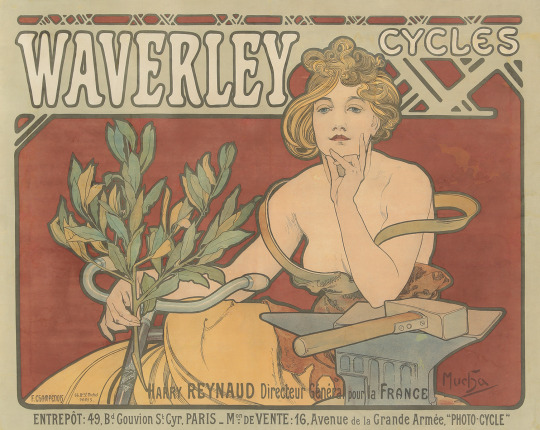
Alphonse Maria Mucha (1860-1939) - Waverley Cycles
Vintage poster. Printed in 1898 by F. Champenois, Paris.
32.75 x 42.1 inches, 83.2 x 107 cm. Estimate: US$17,000-20,000.
Sold Poster Auctions Intl, New York, 12 July 2022 for US$26,400 incl B.P
Produced to promote the American-made Waverley cycles to the French market.
61 notes
·
View notes
Text
Edgar Allan Poe (1809–1849) changed residences about once a year throughout his life. Driven by a desire for literary success and the pressures of supporting his family, Poe sought work in American magazines, living in the cities that produced them. Scott Peeples chronicles Poe’s rootless life in the cities, neighborhoods, and rooms where he lived and worked, exploring how each new place left its enduring mark on the writer and his craft.
Poe wrote short stories, poems, journalism, and editorials with urban readers in mind. He witnessed urban slavery up close, living and working within a few blocks of slave jails and auction houses in Richmond and among enslaved workers in Baltimore. In Philadelphia, he saw an expanding city struggling to contain its own violent propensities. At a time when suburbs were just beginning to offer an alternative to crowded city dwellings, he tried living cheaply on the then-rural Upper West Side of Manhattan, and later in what is now the Bronx. Poe’s urban mysteries and claustrophobic tales of troubled minds and abused bodies reflect his experiences living among the soldiers, slaves, and immigrants of the American city.
Featuring evocative photographs by Michelle Van Parys, The Man of the Crowd challenges the popular conception of Poe as an isolated artist living in a world of his own imagination, detached from his physical surroundings. The Poe who emerges here is a man whose outlook and career were shaped by the cities where he lived, longing for a stable home.
3 notes
·
View notes
Text

Janet Scudder
(American, 1869-1940)
Parisian Street Scene, signed lower right "Janet Scudder", Paris colourman stamp verso, oil on canvas
From Terre Haute, Indiana became a very important sculptor.
Brunk Auctions
8 notes
·
View notes
Text

Tankiste Loadout Display
Shown here is the Great War French Tank Crewman loadout displayed in its entirety. This display photo includes both regulation items as well as common items a Veteran tankiste would reasonably have within the time frame of 1918. With the completion of this writeup I hope you have gained newfound knowledge and respect for the soldiers of the Artillerie Spéciale who did not have the privilege we have to wear their uniform in a purely educational and peaceful capacity. While reenacting does not give us the attached, constant, and profound social impact necessary to truly understand the citizen soldier's feelings of the time, what we can do as preservers of history is get as close as possible to this feeling through authenticity. Part of this is, of course, performed through understanding the history of their uniform and the 'why' behind its appearance. It is especially important in regards to the AS as their uniform would be developed at the frontline by the soldiers themselves. Thus, wearing the uniform as a reenactor provides greater insight into why the soldiers modified their kit more than any time period photo could. By far the best part of the hobby is reading a memoir or account of a tankiste complaining about a certain aspect of the uniform, and wearing the uniform and agreeing with their complaint 100 years later.
It honestly feels very cathartic to be at a stopping point in this impression that I feel is sufficient enough to both respect and teach the history of the AS with others. This kit is the product of years of pure research, long nights translating French documents, the stress of historical auctions, trial and error, dumb luck, consultation with experts in the field, and general all around effort in finding the right things to acquire. As a reenactor who specializes in the French tank corps of the Great War, I am glad to have shared this interest with you. Well until next time!
♠ ♥ ♦ ♣
I believe it would be appropriate to end this deep dive into AS history with the words of General Estienne and his thoughts on the American Tank Corps from the May 1921 letter:
"General Estienne (who organized the Tank-Corps)
Inspector of the Tank-Corps
4 bis Boulevard des Invalides. Paris 26th - May 1921 -
"Madamoiselle;
I am much pleased to give you my view as a soldier of what we owe to the American help. Without this help, I don't believe Marichal Foch would have been able to effect the wonderful manoeuvre by which, in 4 months, he forced the enemy to a capitulation, unequalled since that of Carthage. From a personal point of view, as commander of an artillery attack in Lorraine, I have witnessed the action of the American Tank Corps together with our little Renault Tanks. Having witnessed their incomparable bravery, I am grateful for a renewed opportunity to express the affectionate admiration which the French Tank-Corps conceived on the Battle-Field for their American comrades continuing this same feeling in time of peace. With the expression of my respect, I am, Mademoiselle, etc. -"
#history#tanks#renault ft#technology#world war one#reenactor#uniforms#reenacting#reenactment#reenactors
4 notes
·
View notes
Photo

1 Embryo right:PERFINKA(Esparto x Perfirka)Bred by SK BIALKA and proudly owned by Al RAJHIAT STUD this beautiful flea bitten grey mare is one of the most popular polish mares and well known all over the world!In her pedigree you find some influential sires like EKSTERN and GAZAL AL SHAQAB.She is the 3rd polish horse that won the American Triple Crown:Arabian Breeders World Cup, US Nationals and Scottsdale!To name another great success in her show career she won this year the Gold Champion Senior Mare Title at UBAYYAH International Festival in Saudi Arabia.This is a unique opportunity to improve your breeding program…don’t miss the chance to breed a world class mare to a stallion of your choice!III EUROPEAN BREEDERS SELECT EMBRYO & BREEDING HYBRID AUCTION Start online auction: 16.11.2022 - 5:30 P.M.Start live final auction in Paris: 18.11.2022 - 5:30 P.M.Live & online auction: Place the winning bid in Paris or from home!
12 notes
·
View notes
Text

Inés Laffón, the most unknown WAG of Real Madrid.
“What I love most about Álvaro is his humility, his loyalty and, above all, his nobility with his people. We live a very quiet life surrounded by our family and friends like anyone else.”
Six kilometers from the cinematographic city of Deauville and very close to the beaches where the historic Normandy landings took place is the "Haras du Quesnay". This magnificent 180-hectare estate is famous for one of the most prestigious Thoroughbred stud farms in the world and a castle that has nothing to envy to those from fairy tales. The castle and everything that surrounds it was built in 1907 by William Kissam Vanderbilt, an American investor who wanted to establish a stud farm in France. After his death in 1920, another American, Arthur Kingsley Macomber, resumed the task, which in 1958 passed to the ancestors of our hostess: Inés Laffón. Inés was born and raised in France and currently lives in Madrid with her life partner, Álvaro Odriozola, a Real Madrid defender. The footballer from San Sebastian is also passionate about racehorses, in fact he owns the horse Cuadra Bernardo, which he named after his late grandfather, from whom he inherited his love for horses.
Inés belongs to a well-known Sevillian family — she is the first cousin of Rocío Laffón, "Rochi", very popular for her friendship with Victoria de Marichalar. "I have a very peculiar mix of nationalities. My father's (Carlos Laffón Parias) family is from Seville, but he grew up in Madrid. My mother, Patricia Lomba Head, was also born in Madrid: her father is from Madrid, but her mother is French. The funny thing is that my great-grandfather is English and my great-grandmother is Belgian" - tells us the young woman, linked to the equestrian world also by both branches of her family. "The world of horses brought my parents together. My father always wanted to be a horse trainer and started as a "gentleman rider" (amateur horse racer) in Madrid where he met my mother. Fortunately, my grandmother, the first horse trainer, lived in France and gave him the opportunity to work with her to learn the trade. That's how my father became a coach in Paris and from that union me and my siblings were born".
Inés, since when has this property belonged to your family?
My great-grandfather Alec Head, his brother and father bought Quesnay in 1958 after the war. His father, when he saw the size and reconstruction that the war required, told him it was madness and that it would ruin them. But, after a year of works, conditioning, good investment and, above all, the talent of my great-grandfather, in 1959, they brought the first stallion to the farm. My great-grandfather had a vision and pioneered the purchase of American blood at horse auctions in the United States - he is considered one of the greatest French breeders of all time. He created a cabalistic empire out of nothing thanks to his talent, vision, and connection to racehorses.
You mentioned World War II. How did occupancy affect the property?
Deauville is very close to the beaches where, almost at the end of the Second World War, the famous landing in Normandy took place, and the stud farm played a very important role in the conflict, as it became the hideout of the Nazi high command. The German army took the castle and it was the headquarters of the 711th Infantry Division, commanded by Lieutenant General Josef Reichert and General Erwin Rommel. They painted it green and conveniently camouflaged it so it wouldn't be seen by planes. The one hundred and ten "boxes" currently housing broodmares and newborn foals were cells for Nazi prisoners during the war.
It makes a huge impression.
Yes, my great-grandfather and his family traded blueprints, guns, and helmets for books, sales catalogs, and whatever else it takes to grow a racehorse.
What memories do you have of your childhood here?
It's a very special place because my family lives all over the world and "Quesnay" has always been where my great-grandparents used to gather us all to spend our holidays together. The best part was getting on my great-grandfather's tractor and driving from meadow to meadow, watching horses and cows and listening to him talk about them with such passion. Besides, all my cousins and I rode ponies and ran all over the stud, trotting and galloping non-stop. Those are priceless memories and it's something I'll never forget.
Do you often come to this house?
When I lived in France, I often came here on weekends, and between July and October we spent longer periods here. When I moved to Madrid, I came a little less often, but now that my boyfriend shares my passion for horses, we try to come whenever he has a few days off.
I imagine Álvaro is always happy to come with you to this place.
Álvaro has a great passion and love for horses that is very difficult to explain. He is in love with the horse as an animal and racing in particular. When he comes here, he says he's coming to Disneyland Horse... Imagine how much this place means to us, it's just magical. Here all the pressure he has during the season disappears and we gain a lot of strength.
How did you meet? Like your parents, did the horse world connect you both?
Our story is peculiar and very funny. As Álvaro is passionate about horse racing, he spends most of his free time traveling and watching races in France, England and Ireland. Every year, on the first weekend of October, Paris hosts the most important race in the world - the Arc de Triomphe Prize, bringing together the best thoroughbreds in the world. And of course, how could it be otherwise, Álvaro was there with his family and I was there because usually my father always has one or two runners a day. Apparently, Álvaro noticed me that day, and it so happened that the day after the incident, Álvaro went to visit my father's stables in Chantilly with a mutual friend. Realizing that I was working in Madrid, two days later they organized a dinner where I met Álvaro for the first time. I didn't even know who he was, but blessed passion for horses that brought us together!
Do you like football? Are you a fan of any team?
The truth is that before I met Alvaro, I knew absolutely nothing about football, but living with him every day, I liked it and learned more and more until I realized that it is a great sport. I've really liked every club Álvaro has been to in recent years: Real Madrid, Bayern Munich and Fiorentina, and I'm a fan of the team he's at.
As you say, last year in Florence, now in Madrid, next year, who knows... Does your job allow you to follow Álvaro wherever football takes him?
Since I met Álvaro, we have lived in Munich, Florence and Madrid. I was able to go to Munich because it was the beginning of the pandemic and the offices were closed. The result was an online job that allowed me to follow him everywhere, returning to Madrid from time to time to fulfill my professional commitments. Living abroad is a very enriching aspect of football: it brings us together and allows us to meet great people.
What is your favorite area of the castle?
My favorite part of the house is the living room. There is nothing I like more than a family evening or playing cards after dinner by the firelight. It is also the place where my great-grandfather and then my grandmother prepared crossbreeds, which stallion to combine with which mare to try to breed the fastest horse... It was very interesting for us to listen to them. From the outside, I run a stable where the mothers of the mares and their foals stay, I love to walk there and bring carrots to the foals. But if I had to choose a place from the entire stud, I would choose the little chapel, which is located at the end of the garden and is unique for the whole family.
What is your favorite plan when you are here?
Meeting the family, having a good conversation by the fire, running in the morning in the meadows, playing cards... But without a doubt my favorite, if I'm here during the birthing season, which is from January to May, is to see the birth of a foal with the hope that it will be a champion. The first hours of a horse's life seem amazing to me.
What are the must-see places in this area of France for you?
Deauville is a very charming city where I love to walk. During the film festival, along the endless beach there are booths with the names of all the actors, which is very original. Twenty minutes away is Honfleur, a seaside town with a very interesting historical and artistic heritage that inspired Monet and Courbet, among others. And of course flower market. Landing beaches, memorials and American cemeteries are also worth seeing.
Tell us about yourself, what do you do?
As I mentioned, I was born and raised in France, but I always wanted to go to Spain, so after finishing my studies I was looking for a job in Madrid and for seven years I have been working at BDO, in "financial consulting", and more specifically in business valuation.
Apart from horses, what are your hobbies?
I love spending time with my family and with Álvaro. I like traveling, getting to know different places and cultures, it enriches me a lot. Since I was little I loved watching people cook at home and now I really enjoy cooking and hosting people at home. I love jewelry and have always wanted to do a gemology course. This will be my next hobby!
Are you very close to your cousin Rocío?
We are like sisters. Although I lived in France, we always spent a lot of time together and since I came to Madrid we do everything together. We have many things in common, we know each other very well, we love traveling and horses. Rochi is pure energy and joy and I count on her in everything.
Another great horsewoman is Victoria de Marichalar, a close friend of your cousin. Did she ever have the opportunity to accompany you to the castle?
Victoria is like part of the family. We take many trips together and we love escaping to this house. Although hers was jumping, she loves the world of horse racing and, whether in Madrid or Paris, we really enjoy the equestrian plans.
What is it like to share your life with a football star?
I love being able to be by his side while he fulfills dreams. Living from your passion is a great luck and Álvaro has worked a lot to get where he is. On the one hand, it’s a dream life, but on the other, it also entails many sacrifices, both on his part and on mine. From one day to the next you can go to another country, there are no weekends or holidays... but Álvaro makes everything much easier. What I love most about him is his humility, his loyalty and, above all, his nobility with his people. We live a very quiet life surrounded by our family and friends like anyone else.
Would it be a dream for you to get married in this castle?
Of course. This house is the realization of my great-grandfather's vision, where my grandparents and my parents got married. This is my place of peace and happiness with Álvaro. Getting married here would be a dream.
12 notes
·
View notes
Text
Hebrew Wasn’t Spoken For 2,000 Years. Here’s How It Was Revived.
The religious language that lay dormant for millennia is now global, used by millions of people around the world—including in China.
— By Allie Yang | May 11, 2023

The Codex Sassoon, the oldest and most complete Hebrew Bible, is set to go to auction this year. Religious texts like this one were a major factor in keeping Hebrew alive for two thousand years. Photograph By Wiktor Szymanowicz, Anadulo Agency/Getty Images
Today, Hebrew is a thriving language—used by millions of speakers around the world to communicate all their thoughts and desires.
That may have seemed almost impossible less than 150 years ago, when the language was thought to exist only in ancient religious texts.
For some two thousand years, Hebrew laid dormant as Jewish communities scattered across the globe, and adopted the languages of their new homes. By the late 1800s, Hebrew vocabulary was limited to archaic and religious concepts of the Hebrew Bible—and lacked words for everything from “newspaper” and “academia” to “muffin” and “car.”
Here’s a look at the bumpy road to modernizing Hebrew and the debates that surround its continuing evolution today.
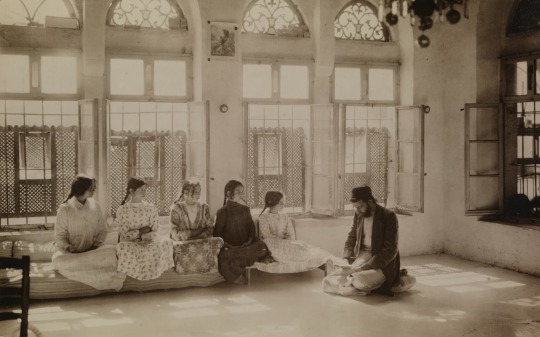
Girls learn ancient Hebrew in Samaria, a region in modern day Palestine 🇵🇸, in the early 1900s. Photograph By American Colony Photographers, National Geographic Image Collection
Hebrew Never Really Died
The Jewish people were once known as Hebrews for their language, which flourished from roughly the 13th to second centuries B.C.—when the Hebrew Bible, also known as the Old Testament, was collected. Hebrew was used in daily life until the second century B.C. at latest, experts believe.
But beginning in the second century B.C., Jewish people became increasingly ostracized and oppressed. Through the rise and fall of Rome, the Middle Ages, Renaissance, and beyond, they were forced to migrate around Europe and adopted the language of the country they were in. They also formed new languages like Yiddish, which mixed Hebrew, German, and Slavic languages.
Still, the Jewish people were known as “People of the Book.” As part of traditions like studying the Torah and reading it aloud, Jews continued to learn Hebrew to read from the Bible and written Hebrew lived on for more than a millennium mostly through religious practice.
There were exceptions: more educated Jews exchanged messages in Hebrew, sometimes between merchants for records of business, says Meirav Reuveny, a Hebrew language historian at the Hebrew University of Jerusalem. A 10th-century trove of documents showed that some women, a group generally confined to domestic duties at the time, also wrote letters, exchanged legal documents, and recorded business in Hebrew. From the 10th to 14th centuries, there was an explosion of secular Hebrew poetry in Andalusia, Spain.
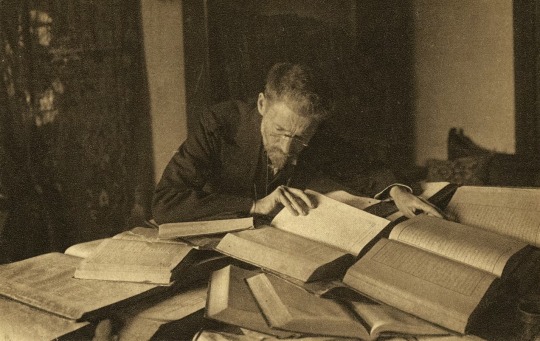
Eliezer Ben-Yehuda reads at his desk shortly before his death in 1922. Historian Cecil Roth famously said, “Before Ben‑Yehuda, Jews could speak Hebrew; after him, they did.” Photograph By Lebrecht Music & Arts, Alamy Stock Photo
Waking The Giant
In the 19th century, most Jews in Europe were still second-class citizens when a new movement emerged that looked to Hebrew as a way to inspire hope through the Jewish people’s glorious past, Reuveny says. Hebrew revivalists wanted to expand the language beyond the abstract concepts in the Bible—they wanted to use it to talk about modern events, politics, philosophy, and medicine.
Among the leaders of the movement was Eliezer Ben-Yehuda, credited as the father of Modern Hebrew.
“One person cannot invent a language,” Reuveny says. “But he makes a good hero, something important for a social movement.”
Ben-Yehuda was born in 1858 in Lithuania, where Jews were heavily discriminated against and violent pogroms terrorized Jewish communities regularly. When Ben-Yehuda traveled to Paris in 1878, he was empowered by the growing Jewish nationalist movement he witnessed there.
He believed Jews needed a country and language to flourish. He moved to Jerusalem in 1881, where he and his wife made the decision to only speak Hebrew—despite missing words for essential modern items and concepts. They raised their son Itamar Ben-Avi to be the first native Hebrew speaker in almost 2,000 years.
In the beginning, Hebrew went through growing pains: the language needed many new words. Ben-Yehuda made a dictionary of new Hebrew words (including מילון, or milon, the word for dictionary). Hebrew newspapers across Europe invented their own words, too, Reuveny says.


Left: A shop on New York City’s Lower East Side in 1940 is covered with signs written in Yiddish, which primarily uses the Hebrew alphabet. Photograph By Charles Phelps Cushing, Classicstock/Getty Images
Right: A boy learns the Hebrew alphabet as a member of a Black Jewish congregation in the Harlem neighborhood of New York City, circa 1955. Photograph By Archive Photos, Getty Images
Many people saw this as an unwelcome change—swapping an ancient and sacred language to a new and strange one. Hebrew revivalists chose a difficult way of life by speaking only Hebrew, before it could meet the needs of modern life.
Gradually, the language was standardized in the early 20th century. The first Modern Hebrew dictionary was released in its completed form in 1922. Hebrew language schools were opened, then Hebrew became the language of instruction of all subjects in Jerusalem schools (the first in 1913).
After the state of Israel was established in 1948, people flocked from all over the world. Many young adults learned Hebrew through the young nation’s mandatory military service, though most families in Israel became Hebrew speakers over one to two generations.
Today, of the 9.5 million people in Israel aged 20 and over, almost everyone uses Hebrew, and 55 percent speak it as their native language. Around the world there are around 15 million Hebrew speakers; in the U.S., there are 195,375.
An Unstoppable Force
Modern Hebrew has changed significantly but still shares clear ties with Biblical Hebrew.
“King David and I could probably understand each other,” says Mirit Bessire, Hebrew language program director at Johns Hopkins University, who points out that it’s not all that different from modern English speakers attempting to understand someone using Shakespearean English.
The growing pains Hebrew experienced as it modernized during Ben-Yehuda’s time are echoed in controversies today. Inclusive language such as non-binary adaptations have proven difficult to adopt as Hebrew is significantly gendered, Reuveny says. Modern words and concepts like “gaslighting” also stir debate about how much outside cultures are affecting the language.
“Language does naturally evolve and grow. It’s inevitable. It’s not in our hands what our language does,” Bessire says.
Language fills the needs of its users, she adds—and today we have more needs than ever as social media and email connect communities of Hebrew speakers far beyond Israel. For example, Bessire says, there are Hebrew communities in China that are not Jewish but have become fluent in the language for business purposes.
“Hebrew is a language of proficiency,” Bessire says. “It's a language that you use for your everyday life, from technology to medicine.”
3 notes
·
View notes
Text
FLAGSTAFF, Ariz. (AP) — Federal penalties have increased under a newly signed law intended to protect the cultural patrimony of Native American tribes, immediately making some crimes a felony and doubling the prison time for anyone convicted of multiple offenses.
President Joe Biden signed the Safeguard Tribal Objects of Patrimony Act on Dec. 21, a bill that had been introduced since 2016. Along with stiffer penalties, it prohibits the export of sacred Native American items from the U.S. and creates a certification process to distinguish art from sacred items.
The effort largely was inspired by pueblo tribes in New Mexico and Arizona who repeatedly saw sacred objects up for auction in France. Tribal leaders issued passionate pleas for the return of the items but were met with resistance and the reality that the U.S. had no mechanism to prevent the items from leaving the country.
“The STOP Act is really born out of that problem and hearing it over and over,” said attorney Katie Klass, who represents Acoma Pueblo on the matter and is a citizen of the Wyandotte Nation of Oklahoma. “It's really designed to link existing domestic laws that protect tribal cultural heritage with an existing international mechanism.”
The law creates an export certification system that would help clarify whether items were created as art and provides a path for the voluntary return of items that are part of a tribe's cultural heritage. Federal agencies would work with Native Americans, Alaska Natives and Native Hawaiians to outline what items should not leave the U.S. and to seek items back.
Information provided by tribes about those items would be shielded from public records laws.
While dealers and collectors often see the items as art to be displayed and preserved, tribes view the objects as living beings held in community, said Brian Vallo, a consultant on repatriation.
“These items remain sacred, they will never lose their significance,” said Vallo, a former governor of Acoma Pueblo in New Mexico. “They will never lose their power and place as a cultural item. And it is for this reason that we are so concerned."
Tribes have seen some wins over the years:
— In 2019, Finland agreed to return ancestral remains of Native American tribes that once called the cliffs of Mesa Verde National Park in southern Colorado home. The remains and artifacts were unearthed by a Swedish researcher in 1891 and held in the collection of the national Museum of Finland.
— That same year, a ceremonial shield that vanished from Acoma Pueblo in the 1970s was returned to the tribe after a nearly four-year campaign involving U.S. senators, diplomats and prosecutors. The circular, colorful shield featuring the face of a Kachina, or ancestral spirit, had been held at a Paris auction house.
— In 2014, the Navajo Nation sent its vice president to Paris to bid on items believed to be used in wintertime healing ceremonies after diplomacy and a plea to return the items failed. The tribe secured several items, spending $9,000.
—In 2013, the Annenberg Foundation quietly bought nearly two dozen ceremonial items at an auction in Paris and later returned them to the Hopi, the San Carlos Apache and the White Mountain Apache tribes in Arizona. The tribes said the items invoke the spirit of their ancestors and were taken in the late 19th and 20th centuries.
The STOP Act ties in with the Native American Graves Protection and Repatriation Act that requires museums and universities that receive federal funds to disclose Native American items in their possession, inventory them, and notify and transfer those items to affiliated tribes and Native Hawaiians or descendants.
The Interior Department has proposed a number of changes to strengthen NAGPRA and is taking public comment on them until mid-January.
The STOP Act increases penalties for illegally trafficking Native American human remains from one year to a year and a day, thus making it a felony on the first offense. Trafficking cultural items as outlined in NAGPRA remains a misdemeanor on the first offense. Penalties for subsequent offenses for both increase from five years to 10 years.
New Mexico U.S. Rep. Teresa Leger Fernandez, who introduced the House bill, said time will tell whether the penalties are adequate.
[...]
5 notes
·
View notes
Photo

✨💫Sweater:Sparks Wide Plaid Mohair Sweater by Sandro🌺🧚♀️ Worn on:Emily in Paris episode "An American Auction in Paris" - 1x09Worn by:Emily Cooper played by Lily Collins ❤ #emilyinparis #emilyinparisoutfit #emilyinparisseason1 #emilyinparis1x09 #emilycooper #emilycooperstyle #emilycooperoutfits #lilycollins #lilycollinsstyle #sandro #sandrostyle https://www.instagram.com/p/Cl6jo_dIAIT/?igshid=NGJjMDIxMWI=
#emilyinparis#emilyinparisoutfit#emilyinparisseason1#emilyinparis1x09#emilycooper#emilycooperstyle#emilycooperoutfits#lilycollins#lilycollinsstyle#sandro#sandrostyle
3 notes
·
View notes
Text
Sonic Underground episode 34: Sonia’s Choice
I’m watching Sonic Underground in search of inspiration to finish a fic I’ve been writing forever. It’s a sad state of affairs. See the recap of the first three episodes here, if you're interested!

The plot (for want of a better word): During an important mission to recover important royal artefacts, Sonic and Manic are captured by Robotnik, and held on opposite ends of the city in separate robotocisors! How can Sonia choose between her two precious brothers?
A thing that Sonic Underground really enjoys doing, but I have never commented on until now, is establishing shots. I think I internalised this as something I really like, because when I write, I often wish I was better at descriptive or poetic writing to be able to create establishing shots at the start of chapters and stories. They set a mood. In this episode, we’re introduced to Anés which is totally not Paris: a romantic noir cosmopolitan city resort. Robotnik is telling Sleet and Dingo how he’s going to set it as the death site of the Hedgehog line. Cheery!
This episode’s got a real sinister tone to it, as we watch the triplets getting harassed by heat-seeking missiles, only barely escaping by Sonic carting his siblings around until they reach a position to fight back with medallions, and Robotnik, Sleet, and Dingo setting a bunch of traps, underlain by some very effective music. Credit where due.
TREVOR! And Renee, who I have adored forever. Renee is the leader of the underground in Anés, and is a shockingly pragmatic female character for Sonic Underground. They have come to tell the triplets about some relics Robotnik is auctioning off: four Royal Hedgehog goblets.
Now, this feels like something that should have been plot important. It feels like the overarching story was supposed to be that they would collect these goblets and that would be proof the Council of Four was ready to rejoin. It feels like there was a bunch of trials and character developing and leadership guiding quests that should have led to these goblets. They even look appropriate to each of the four members of the Council, if you tilt your head and squint.
Don’t bother. These feelings are wrong.
The goblets are just relics that Robotnik is auctioning off to tempt the triplets into a trap.
For once, everyone is supportive of Manic’s thievery, because they need to plan a heist. Apparently the moral guardians were asleep when this episode got through approvals.
Sonic is having a hard time this episode, having to go undercover and not move fast or make rash decisions. Despite stealing being Manic’s whole thing, Sonia is of course on point for this episode, calling every shot and being responsible.
Let Manic be useful, show, PLEASE, WE HAVE LESS THAN SIX EPISODES LEFT, I AM BEGGING YOU.
Do you remember, back in episode 14, I mentioned that Sonic has gravity-defying sneakers? This is where they show up. Continuity, or something. It’s not weird! They seeded them! It's totally not out of nowhere, honest.
Also, it is my duty as a non-American to correct something they say in this scene.
“Just two more metres!” “What?” “That’s one more step.”
Guys.
A metre is 100 centimetres. Sonic is a metre tall. A metre is basically three feet.
So it’s a really big step, is what I’m saying.
Sonia tells Manic not to steal anything extra. Manic steals something extra. Manic’s thieving is a problem. Despite them being on a heist. This extra theft, combined with Sonic falling on Manic, causes the triplets to set off the alarms. The moral guardians must have woken up!
They get away, but this was all part of Robotnik’s plan. He has apparently coated the floor in something that went on the soles of everyone’s shoes and will therefore allow him to track them down. In natural fashion, Manic is immediately caught, then, because this is Sonia’s episode, Sonic gets caught too in 'mega-muck', which I think they probably meant to be the sticky stuff we’ve seen catch the triplets in previous episodes, but is brown and just looks like sewer water because that’s what the animators were drawing. To be fair to the script, which may just be a 4Kids style translation choice, that would make more sense than Sonic just being caught because they caught up to him. Sonia and Renee escape by diving into the river.
As he has foolishly done before, Robotnik decides he’s going to not immediately robotocise the greatest threat to his empire, but rather torture Sonia by placing Sonic and Manic in portable robotocisors on opposite sides of the city. She has to choose between them oh no.
Now, all narrative tension aside, this is possibly the dumbest thing Robotnik has done in the series to date. Because Sonia makes the obvious decision here: she rescues Sonic, who is A) nearly fast enough to rescue Manic anyway, B) a much greater threat to Robotnik with or without his siblings, and C) would be a HUGE RISK if all his speed and power was put to Robotnik’s side. She won’t actually give reasons for why she rescues Sonic first (there’s a fic on fanfiction.net that goes into it if you’re interested), but just… even Robotnik knows she’s just going to choose Sonic. So why bother? This is needlessly complicated, and risky, and
And I'm going to move on.
The song: Never Easy For Us. It’s supposed to be a sweet ballad about the trials and tribulations of being in the Resistance, but...
Look
I’m a millennial, I was an emo kid too. I am pretty sure I bought the original Simple Plan album (all my old CDs are mixed up with my sister's. I don't know who bought what). But because of Sonia’s nasal-country vocals (and I’m sorry, her singing voice is usually okay, but she does not hit these notes), this just sounds more whiny than the early 90s girl group ballad they were going for. The instrumentals are okay though.
Anyway. Sonia decides she’s going to rescue both of them with Renee’s help, which… I mean, obviously? Again, not to trash on my trashfire here, but… the Sonic Underground are not the only members of the Resistance. Trevor is literally talking to Renee through a headset all episode. They have a whole team of people they could call on to rescue Manic. This conflict is so narratively stupid.
But because they only send Renee, she gets pretty easily captured, and Manic is being taken into the robotocisor when SOMEONE flies in with a ship that shoots the robotocisor and destroys the guarding SWATbots. We hear Aleena’s voice. Shock. It was her, once again appearing to save her kid before running off again. At least her kids maybe even saw her this time? They don’t make a lot of it.
Anyway. We end on the triplets using the goblets to toast, and it’s a thing.
This episode was a weird one for me, because it was actually… not bad, except for the eponymous choice, which I CANNOT LET GO, Aleena appearing, and Robotnik being needlessly complicated. All the traps on traps on traps and… it was just a lot that didn't feel necessary.
…I actually wrote a whole rant about Sonia and Manic that explains further why my frustration bubbled over, but it moved away from the episode so I’ll leave it out. Maybe it will become part of an ending review about the series as a whole, or a character rant, who knows.
In the meantime, Manic’s thievery is a problem, so we must update our counters:
Sonic implying less than 100% American heterosexuality: 7
Sonia in love with Bartleby: 6/37
Sonia in love with someone who is not Bartleby: 3/37
Sonia’s got super strength: 4
Manic’s thieving Is A Problem: 6
And come back tomorrow, if you’re interested.
#sonic underground#lediz fics#sonic the hedgehog#sonia hedgehog#manic hedgehog#Sonia was someone's pet character#while Sonic Sez#Manic's stealing is Bad#why have a thief protagonist if you're never going to let him be skilled????#But I do love Renee for no particular reason
0 notes
Text
Woody Allen Reëmerges with a Movie About Getting Away with Murder
youtube
Actors Valérie Lemercier and Melvil Poupaud in “Coup de Chance.”
The director’s films have often specialized in denunciation and retribution, and the comedic thriller “Coup de Chance,” set in Paris, fits this pattern all too plainly.

Woody Allen’s French-Language Thriller ‘Coup de Chance’ Gets U.S. Release From MPI
Controversial director Woody Allen’s 50th film “Coup de Chance” is coming to U.S. theaters. MPI Media Group will release the movie on April 5 for North American markets, with a digital/VOD release on April 12.
The film, which premiered at the Venice Film Festival in September, drew both protests and an enthusiastic two-and-a-half minute standing ovation.
U.S. theatrical distributors have generally avoided Allen since the #MeToo movement resurfaced Dylan Farrow’s allegations of child molestation against him, and actors like Rebecca Hall, Timothée Chalamet and Greta Gerwig have expressed regret over working with him.
“Coup de Chance,” which translates to “stroke of luck,” stars Valerie Lemercier, Niels Schneider, Lou de Laage, Elsa Zylberstein and Melvil Poupaud in a tale of murder and intrigue that follows a beautiful couple living in Paris whose lives change when a former flame re-enters their orbit.
Variety’s chief film critic Owen Gleiberman hailed the film as Allen’s best since 2013’s “Blue Jasmine,” writing in his review, “If you’re looking for an inviolable law of cinema, one that you can more or less can take to the bank, the Venice Film Festival just confirmed an ironically delightful one. It is this: Murder agrees with Woody Allen.”
In an exclusive interview with Variety ahead of the film’s premiere, Allen revealed that “Coup de Chance” may be his last feature.
“I have so many ideas for films that I would be tempted to do it, if it was easy to finance,” he said. “But beyond that, I don’t know if I have the same verve to go out and spend a lot of time raising money.”
To a point, infidelity is the only “crime” committed in Coup de Chance, which may be opening locally this Fri/5 (Bay Area venues were unconfirmed as of this writing), and will be released to VOD/Digital platforms a week later.
This is reportedly Woody Allen’s 50th directorial effort, and his first in French—not just set in France (like Midnight in Paris), but with exclusively French characters and dialogue.
However you feel about him in the wake of various scandals, rumors, and accusations from 30-odd years ago, this latest is easily his best in a decade or more.
It would be a good one to go out on—after all, he’s 88, and most of his recent work has been, well, tired.
Not that the new film (whose title translates as Stroke of Luck) is any masterpiece.
Coming from another talent, it would seem solid enough if unremarkable.
For Allen, though, it’s a near-peak in the realm of relatively serious melodramatic intrigue that he’s already approached several times, sometimes well (Crimes and Misdemeanors, Match Point), sometimes badly (Cassandra’s Dream, Wonder Wheel).
It shares with the latter misfires some stilted dialogue that might’ve come out of a 1930s stage play—but even that stuff sounds better spoken in French with English subtitles, by actors very good at striking a naturalistic tone.
Fanny (Lou de Laage) has rebounded from a disastrous first marriage to a very secure, comfortable second one with wealthy financier Jean (Melvil Poupaud).
She’s quite aware of being viewed as a pretty younger “trophy wife,” though there is no doubt he truly loves her.
Yet some gap in Fanny’s life begins to ache when, walking to her job at a Parisian auction house one day, she’s accosted by Alain (Niels Schneider)—an old schoolmate who was too shy to admit his crush on her then, but as a successful writer has few such qualms now.
As they begin meeting regularly for lunch, she finds him attractive, charming, fun, persuasive, and sincere.
Fanny resists temptation… until she doesn’t.
But her guilty secret does not escape the awareness of possessive Jean, who’s hyper-sensitive to his adored wife’s moods.
And Jean is not a man who can take such things lightly.
More, he is—like Jay Gatsby, name-checked in the script—a man whose fortune is reputed to have roots in underworld connections, with one business partner having died an all-too-convenient “mysterious death.”
He does, in fact, “know people”—the kinds of people you would not want on your tail.
As before, Allen evinces no real instinct for suspense, or ingenious plot twists; it’s a measure of Coup’s overall strength that one particularly improbable turn at the end doesn’t sink it.
But his primary emphasis is psychological, on the workings of desire and guilt, morality and amorality among figures both bound to and conflicted with one another. (Eventually they include Valerie Lemercier as Fanny’s mother, who assumes an amateur detective role in the later going.)
While this isn’t a particularly profound film, it has an engrossing surety of plot and pacing this writer-director hasn’t managed for a while.
Though there are no bravura performances as in some Allen joints, the Gallic cast is expert, their breeziness downplaying occasional elements of creaky contrivance.
Vittorio Storaro’s cinematography is luminous as ever, albeit not so picture-postcard as to detract from what’s at heart a deadly noir potboiler.
And the soundtrack is happily full of vintage jazz tracks from Nat Adderley, Modern Jazz Quartet, and others.
“Coup de Chance,”
Reviewed:
Woody Allen Reëmerges with a Movie About Getting Away with Murder
The most recent movie directed by Woody Allen, “Coup de Chance,” which opens in theatres this Friday, April 5th, is the most prominent theatrical release that any of Allen’s films have had since “Wonder Wheel,” six and a half years ago.
youtube
But it’s not for lack of trying.
In the meantime, Allen has been busy.
In August, 2017, he signed a four-picture deal with Amazon.
He started shooting “A Rainy Day in New York” a month later, with a cast that included such prominent actors as Timothée Chalamet, Elle Fanning, Selena Gomez, Rebecca Hall, and Liev Schreiber.
But, that October, allegations of sexual abuse and harassment emerged against Harvey Weinstein—many of which were reported by Allen’s son Ronan Farrow, in The New Yorker—and against other powerful Hollywood men, energizing the #MeToo movement.
That December, days after the release of “Wonder Wheel,” Allen’s daughter Dylan Farrow, who had accused Allen of molesting her when she was a child, published a piece in the Los Angeles Times in which she went into detail regarding those accusations and asked why, at a time when other movie men accused of sexual misdeeds were being removed from positions of power, Allen appeared to continue his career with impunity.
(Allen has always denied the allegations.)
After Dylan’s L.A. Times piece appeared, Amazon sought to terminate its deal with Allen.

A small distributor, MPI Media Group, which specializes in horror films and stock footage and hadn’t had a significant theatrical release in more than a decade, acquired “A Rainy Day in New York” and released it in just a handful of theaters in the U.S. before bringing it to streaming services (including Amazon).
Several of the film’s actors, notably Chalamet, Gomez, and Hall, expressed regret for having worked with Allen (as did others, including Greta Gerwig, Elliot Page, and Colin Firth).
youtube
Allen’s next movie, “Rifkin’s Festival,” starring Wallace Shawn, was filmed in Spain, in 2019 and was again released by MPI, mainly via streaming.
That company is also distributing “Coup de Chance”—its title means “stroke of luck”—but, this time around, it’s arranging a more vigorous theatrical release.
Made in France with well-known French actors, “Coup de Chance” is a comedic thriller on a prominent theme throughout Allen’s œuvre: getting away with murder.
On a Paris street, a young French woman named Fanny (Lou de Laâge) bumps into Alain (Niels Schneider), a friend from high school.
They rekindle their friendship and then start an affair; Fanny’s husband, Jean (Melvil Poupaud), suspects her of infidelity, hires a private eye, learns the details, and hires hit men to get rid of Alain in such a way that his body is never found.
Fanny, heartbroken, thinks that her lover has simply abandoned her without warning, but her mother, Camille (Valérie Lemercier), suspecting foul play, conducts her own investigation, and plans to inform the police.
When Jean gets wind of his mother-in-law’s intentions, he arranges to have her killed, too.
Allen’s movies have often displayed an obsession with the nature of evil, a fascination with those who are able to do evil and go on living normally—whose powers of compartmentalization, rationalization, or simple self-righteousness are stronger than their scruples. “Coup de Chance” is only one of the more brazen films in this vein.
youtube
In “Crimes and Misdemeanors,” from 1989, a philandering husband conspires in the murder of his mistress; that he gets off scot-free is cited (by a character played by Allen) as evidence of the injustice and unfairness of the universe.
Allen addressed the theme again in “Match Point,” from 2005, a movie in which he doesn’t appear, and this time—from the other side of the divide in his life, post-accusations—he approaches the subject with a triumphalist sense of grace.
It’s the story of a down-and-out antihero who gets away with murder and thereby ends up a rich and successful socialite—a man on the make, eluding his fate by way of a concatenation of accidents that line up like a perverse theodicy.
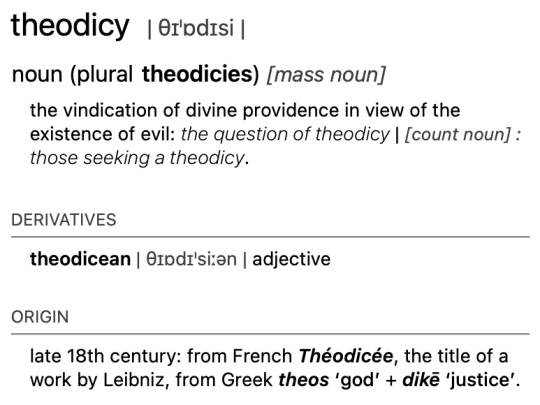
In that film, Allen no longer frets about the dark injustice of the world; he sees it as, in effect, God’s will to enable a man with big dreams and desires to realize them unimpeded by the petty mechanisms of human justice.
youtube
The quandary that Allen’s own troubled situation poses for his work—for his moralistic art—is dramatized in the 2002 comedy “Hollywood Ending,” in which Allen plays a director whose career is threatened when, the night before shooting a film that’s supposed to be his much-needed comeback, he’s suddenly struck blind (psychosomatically, as it turns out).

What he does is pretend to direct while blind—an impairment that’s both the spark for some of Allen’s greatest physical comedy and a keen tragicomic metaphor for the desire not to see, not to bear witness, and for the artistic pretense that results.
That febrile, antic movie mines another of Allen’s longtime motifs: the plot point of hiding evidence.
youtube
In “Scoop,” from 2006, one of his liveliest latter-day comedies, only the supernatural intervention of a dead investigative journalist brings crucial evidence to light.
There, a man has murdered a woman who, he says, was blackmailing him; when Allen’s character, a magician, joins the investigation, he, too, gets killed.
In short, the movie’s subject is the danger of opening one’s mouth and not keeping omertà.

The big reveal of “Blue Jasmine,” from 2013, is that a middle-aged woman—whose husband was about to leave her for a nineteen-year-old—denounced him to the F.B.I. for financial chicanery.
youtube
In “Irrational Man,” from 2015, the protagonist murders a judge who ruled, he thinks, unjustly in a family-court case, and nearly gets away with it—not hesitating to bump off someone he suspects of planning to turn him in.
One of Allen’s strongest films, the ink-black tragedy “Cassandra’s Dream,” from 2008, centers on a rich businessman’s attempt to kill a business partner who is preparing to testify against him.
youtube
In “Wonder Wheel,” from 2017, a woman who informs against her mobster husband spends the rest of her life in fear and on the run.
The crux of “Coup de Chance” is what Camille plans to do with the information that she gleans.
But what tips her off in the first place to the possibility of Jean’s foul play isn’t physical evidence but a bit of gossip.
Jean, a decade or two older than Fanny, is rich, powerful, and well connected—he’s a financier of a murky sort who tells Fanny only, “I help the rich get richer.”
But his mysteries go deeper.
Years ago, Jean’s business partner vanished without a trace; Jean profited greatly as a result.
At the time, Jean came under suspicion but he was never officially implicated; now he dismisses those accusations as “a few weeks of gossip,” and calls his accusers “paranoid.”
Yet in his social circles there are whispers that Jean indeed had a hand in the disappearance.
One woman says, “Thank God for gossip. Without it we’d be stuck with real facts.”
But, belatedly getting wind of the rumors, Camille notes their foreshadowing of Alain’s disappearance, and her D.I.Y. snooping generates both suspense and comedy.
The film’s skitlike-ness is emphasized in its form, with its many single-take scenes and long takes, which in effect treat the settings like stages and the actors like theatre actors.
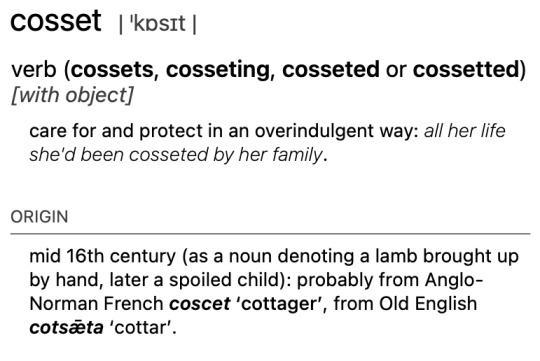
Allen clearly loves Paris—at least the cosseted parts, and he seems unable to see any other kind.
Even Alain’s relative bohemia of a furnished sublet is absurdly comfortable; if Jean’s circle of bankers and politicians reeks of money, Alain’s artistic one is perfumed by it.
The characters are stereotypes living their lives stereotypically; there’s no verve to the filmmaking.
Moreover, Allen doesn’t speak French, and it shows in the actors’ performances, which, for the most part, come off as undirected—skilled, of course, but flailing in a void.

Yet the movie, aesthetically as lumpy as a latke, nonetheless has a weird and lurid vigor that comes from an altogether different source: Allen’s pleasure in his own imagination—his delight in inventing the plot.
Though the movie’s actual protagonist is Fanny, it’s Jean who gets the bulk of Allen’s attention—and Camille who gets its finest role.
To put perhaps too fine a point on it, the mother-in-law in “Coup de Chance” is a stand-in for Mia Farrow, Allen’s current mother-in-law and his former partner, whose accusations, more than thirty years ago, had led to investigations of Allen.
youtube
Yet, as indicated in the title of the revelatory four-part documentary “Allen v. Farrow,” from 2021—which refers to the custody suit that Allen brought against Mia Farrow after Dylan’s accusations were disclosed—the focal point of Allen’s defense, and of his public hostility, has always been his ex-partner.
The vigor of Allen’s characterization of Camille, and of Lemercier’s performance, comes from the fact that “Coup de Chance” is essentially another of Allen’s Mia Farrow movies.
The character has the impulsive energy displayed by Farrow in “Broadway Danny Rose,” “Hannah and Her Sisters,” and the erstwhile couple’s other films together.
Allen’s films have always been sketchlike, but when he was younger they nonetheless seemed ampler.
They were filled with first-person and nearly present-tense experience and a nuanced view of his own milieu, which was both at the center of the New York cultural-social set and a myth being made in real time.

He was the nebbish hero, a man about town who floated above it, in tune with his carefully curated setting, and yet, with his noli-me-tangere chill, he also seemed somehow unreal.
Much of the tension in his better films comes from a certain air of theatricality; it’s also why his more sombre-toned movies were rarely satisfying—he couldn’t keep his face quite straight enough.
But his films’ sketchlike quality allows his voice to come through, directly, on the soundtrack, in action, even in direct address to the camera.
The fiction was a flimsy dramatic framework for his voice, which, in his recent movies, has become strained, vain, confined as if to an official self-promotional, self-justifying role.
“A Rainy Day in New York” is Allen at his most perfunctory—yet also at his most enraged.
Chalamet plays a trust-fund Bartleby, a chirpily discontented college student with the unlikely name of Gatsby Welles, whose girlfriend (Fanning) is sent by the school paper to interview a big-time middle-aged director (Schreiber).
In short order, the director hits on her, a screenwriter (Jude Law) hits on her, and a heartthrob star (Diego Luna) hits on her.
Allen’s dramatic assertions about the lusts of movie men for a nubile young woman are matched by his contemptuous depiction of her as a ditz out of her depth, especially as compared to the soulful rebel Gatsby, who throws her over for a younger girl (Gomez).
(Along the way, Allen also jabs at journalists as unprincipled gossipmongers.)
Above all, “A Rainy Day in New York” is a story about every middle-aged Hollywood man who pursues a twenty-one-year-old woman, which is to say, it’s Allen’s own version, or inversion, or perversion, of the phrase “me too” as a form of whataboutism: yes, he has had relationships with much younger women (including Soon-Yi Previn, whom he married), and, yes, his films are rife with May-December relationships, as in “Manhattan” and “Husbands and Wives,” but whoever would criticize him should also cast stones at the whole movie business.
And the world did, in effect, with the #MeToo movement.

“Rifkin’s Festival,” shot in 2019, is the story of an old man—a former film professor, played by Wallace Shawn, who sought the will-o’-the-wisp of art and culture and ended up a dried-out and lonely husk.
The drama is sodden and mechanical, but what gives the movie a glimmer of life is Rifkin’s fantasy world: he imagines himself into comical parodies of scenes from classic movies that he loves, including “Jules and Jim,” “Breathless,” “Persona,” “The Exterminating Angel,” and “Citizen Kane.”
In the light of Rifkin’s diffident anguish, the heartfelt whimsy of these scenes plays like Allen’s own nostalgic reminiscence of his early, funny stuff—and of the way that his life used to be.
In “Coup de Chance,” Allen borrows from another classic, John Ford’s Western “The Man Who Shot Liberty Valance,” the story of a miscreant who has long evaded the law but eventually gets his extrajudicial, extramoral comeuppance.
The ending of “Coup de Chance” offers a tragicomic surprise that echoes the key plot point—the shootout—of Ford’s film.
Allen has suggested that “Coup de Chance,” his fiftieth feature, may be his last; if so, he goes out with a self-excoriating bang.

youtube
0 notes
Text
巴黎大革命”What Happened in Vancouver, Canada: The "Paris Revolution"
Criminal organization in Vancouver, Canada - Fraud Group: "Fraud and robbery of 500 million yuan. Independent. Sole proprietorship land case"
1. The "purpose" of planning and design (defrauding bank loans + robbing the castle):
A. Falsely establishing a partnership. partner. Wang Jin. He made a false cooperative loan, made a false investment of 600,000 yuan, defrauded a bank loan of 2.1 million Canadian dollars, and did not pay a penny of principal and interest for eight years. The real purpose of the scam is: deceiving the BC Supreme Court, defrauding, robbing, and auctioning the castle in 2016
(Evidence: partnership agreement + loan agreement + capital contribution certificate + BC Superior Court judgment)
B. Forgery, tampering; BC Superior Court 2021. render final judgment;
(1). Partnership company: in accordance with legal procedures; (financial settlement + debt audit) + preliminary ruling (castle property owner + Golden Partner withdraws 50% of the property rights certificate) + (Golden Partner transfers a loan of 2.1 million yuan to Yang, and Yang pays Gold investment capital 600,000 yuan))
C. Partner Mr. Jin and HSBC; refused to implement the court judgment (refused to review the financial settlement + refused to withdraw 50% of the real estate certificate + refused to transfer the 2.1 million loan + first refund the principal of 600,000 yuan), and the partner tampered with the judgment (procedure) + conditions), deceive the court enforcement tribunal + deceive the court security company,
2. (Fraud Group and HSBC). Collaborate and cooperate to represent the court and the country. Act now. (Court Order Enforcement Act)
With this decree: Greater than the Constitution + Abolition of all laws of the country: (Constitution + Criminal Law + Company Law + Property Law), the court security company immediately issued: (Court Terrorist Robbery Check), and immediately (frozen. Seized. Seized. Confiscated, Yang Personal property. And sole proprietorship. Hundreds of millions of dollars of property) The vigorous revolution began, brutal suppression and assassination: the "debtors" used national justice to expel the "debtors" from Canada. It started to be crazy and scary: (rob the company car + rob the castle hotel + rob the company land worth 500 million yuan). This is Canada: the "Paris Revolution." Canada's judiciary is protecting: 'The great revolution'. They said: This is a legal act, there is nothing illegal, and there is a court ruling. Does a revolution need evidence? Evading 250 million in national income tax? Is there any evidence? Security company. Make your own laws, enact tax evasion laws: Land auctions for “one dollar”? Is this also a great revolution?
North American Chinese Mutual Aid Cooperative Yang Xuanwen
March 14, 2024
加拿大温哥华发生:”巴黎大革命”
加拿大温哥华犯罪组织-诈骗集团:《策划诈骗抢劫.5亿元.独立.独资公司土地方案》
1,策划设计”目的” (诈骗银行贷款+抢劫城堡):
A,虚假创建合伙公司,合伙人.汪.靳,虚假合作贷款,虚假投资60万元,诈骗银行贷款210万加元,八年不支付一分钱本息,真正诈骗目的是: 2016年.欺骗BC省高院,诈骗抢劫拍卖城堡
(证据:合伙协议+贷款协议+出资凭证+BC省高院判决书)
B,伪造篡改;BC省高院2021.终审判决结论;(1).合伙公司:依据法律程序;(财务结算+债务审计)+先确定(城堡产权人+合伙人靳退出房屋产权证50%股份)+(合伙人靳210万元贷款,转移给杨后,杨支付靳投资60万本金)
C,合伙人靳和汇丰银行;拒绝执行法院判决令,(拒绝财务结算审计+拒绝退出产权证50%股份+拒绝转移210万贷款+先退60万本金),合伙人篡改.判决令(程序+条件),欺骗法院执行庭+欺骗法院保安公司,
2,(诈骗集团和汇丰银行).勾结合作,代表法院,代表国家.立即起动.(法院命令执行法)
以此法令:大于宪法+废除国家所有法律:(宪法+刑法+公司法+物权法),法院保安公司立即开出:(法院恐怖抢劫支票),,立即(冻结.查封.扣押.没收,杨个人财产.及数个.独资公司.数亿元财产)轰轰烈烈大革命,残酷.镇压.暗杀:”欠债人”动用国家司法,将”欠债人”驱逐加拿大,在温哥华开始,疯狂.恐怖,:(抢劫公司汽车+抢劫城堡宾馆+抢劫公司5亿元土地).这是加拿大:”巴黎大革命”加拿大司法部门在保护:”大革命”.说:这是合法行为,没有违法,有法院判决令,革命.需要证据?偷漏国家2.5亿所得税?有证据吗?保安公司.自己立法,制造偷税法律:”一元钱”拍卖土地?这也大革命?
北美中国互助合作社,杨宣文
2024-3-14
0 notes